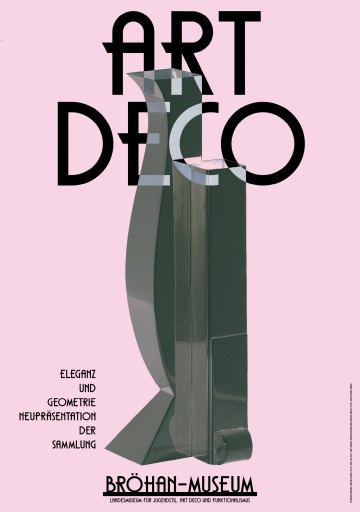
Art Deco: Elegance and Geometry. A New Presentation of the Collection
24 January 2015Art deco is one of Bröhan-Museum’s emphases. Since 24 January 2015, the museum’s art deco collection has been on view on the museum’s third floor in a new exhibit that exudes the flair of the 1920s. Whether glass, metalwork, porcelain, furniture, or posters: the objects all stand for the modernity of the 1920s. A unique anthroposophist desk ensemble by wood sculptor Gerhard von Ruckteschell was purchased especially for the exhibition.
After the First World War, art nouveau was replaced by a new aesthetic. All realms of design – applied art, architecture, film, photography, graphic design, fashion, and jewellery – were shaped by a play with geometric shapes often supported by powerful colour contrasts. This new aesthetic manifested itself in French art deco and in modernist design shaped by the Bauhaus and functionalism. The style stretches from an objective-simple functionality to an elaborate, elegant worldliness.
Art deco was an international style that became established in Europe and the United States. The distinction between the new style and art nouveau was gradual. The Second World War brought about the end of the style in Europe, while in the United States the style remained current and flowed into the design of the 1950s, especially in New York skyscrapers.
Design advertising motif: Gerwin Schmidt, Munich
